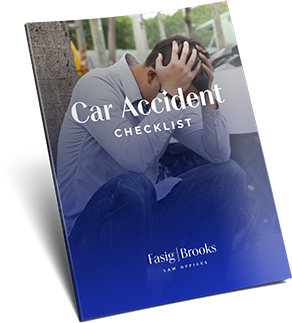
The popularity of all-terrain vehicles (or ATVs) has been increasing nationwide due to the increased number of vehicle types and models available to consumers. While the term ATV can be used to describe any number of open motorized buggies and tricycles designed for off-road use, the industry actually makes distinctions between various types of vehicles. According to industry experts, the basic classifications include:
ATVs – according to the American National Standards Institute (ANSI), in order to be defined as an ATV, a vehicle must travel on low pressure tires, have a seat that is straddled by the driver or operator, and have handlebars for steering control. Currently, the standard also calls for the vehicle to be used by a single rider-operator. ATVs come in three and four wheel models. Four-wheeled ATVs are commonly referred to as quads, four-wheelers, and ATVs. Three-wheeled ATVs are typically referred to as three-wheelers, ATCs, and trikes.
UTVs – utility task vehicles (or UTVs) are also called side-by-sides. Like ATVs, UTVs typically have a combustion engine, as well as significant suspension and aggressive tires. They also typically have a low center of gravity that helps add stability to the vehicle over rough terrain. UTVs differ from ATVs in that the UTV driver sits on a bench or in a bucket seat rather than straddling the vehicle. The UTV driver operates the vehicle using a steering system that has a steering wheel, rather than handlebars. Other distinctions include the fact that UTVs typically are designed to accommodate more than one rider and they commonly have a truck-like bed for hauling purposes.
ATV And UTV Safety
ATV and UTV safety is extremely important because riders are exposed to the outside elements and the vehicles are used off-road, where terrain and trail conditions can be rough.
In particular, safety experts stress that experience counts when operating an ATV or UTV. All new riders are strongly encouraged to take a training course, which are offered nationwide and are often free of charge. Class content typically includes instruction on the proper gear to wear, the techniques for riding on different terrain, as well as essential potentially life-saving tips such as not riding on paved roads (if the vehicle is not designed for this purpose), not riding at night, and not riding tandem or carrying multiple riders on a vehicle designed for a single rider.
Rider safety is important because, nationwide, every year over 100,000 riders are injured seriously enough to require emergency department treatment. In 2010 (which reflects the most current statistics on the issue), an estimated 107,500 individuals received ER treatment. There also were a reported 590 deaths (with the estimated deaths being somewhat higher at 726).
In Florida, records show that there have been 485 reported ATV deaths from 1982 through 2011. Of these, 109 were children under the age of 16.
ATV and UTV Injuries
The increase in ATV and UTV injuries and deaths is attributed to two factors—the overall increase in ridership and an increase in the power of these off-road vehicles over the years. While ridership is up, the vehicles that riders are operating now have engines of more than 600 cc and 50 horsepower, weigh more than 400 pounds, and can reach tops speeds of more than 100 miles per hour.
In reviewing ATV and UTV accidents, medical experts have found the following:
- ATV injuries are most common in white men between 18- to 30-years old, and in persons older than 50 years.
- 80 percent of injuries are to the driver of the vehicle.
- Injuries occur more frequently during recreational activities, rather than when the vehicle is used for work activities.
- 27 percent of ATV injuries and 28 percent of deaths involve children, even though only 15 percent of ATV riders are children.
- Common injuries sustained in ATV and UTV accidents include head injuries, thoracic injuries, fractures, and abrasions.
Tallahassee Legal Help for Victims of ATV and UTV Accidents
ATVs and UTVs can be fun to operate and they also can be very useful. However, they can pose significant dangers to drivers and riders. Accidents involving ATVs are often the result of one or more of the following conditions:
- operating on paved roads;
- carrying passengers on a vehicle designed for a single rider;
- operating on trails that are not properly maintained or that are above the operator’s skill level;
- young operator driving without adequate safety training, equipment, or adult supervision;
- child operating vehicle that is too large/powerful;
- driver operating at an unsafe speed;
- operator and/or passenger not wearing helmet or other safety equipment;
- operator under the influence of drugs or alcohol; and
- driver distraction.
Because ATV and UTV accidents can happen in a variety of ways, if you or a loved one has been injured in any type of vehicle accident, it is important to protect your legal rights to financially recover for your losses. To find out more about your legal options, call the knowledgeable and helpful Tallahassee and Southern Georgia car accident attorneys at Fasig & Brooks today at (850) 222-3232 or use our online contact form to reach us and take advantage of our free, no-obligation consultation. We help clients throughout Florida and South Georgia, including Ft. Walton Beach, Gretna, Havana, Jacksonville, Gadsden County, Miami, Panama City, Pensacola, Quincy, and the metro-Tallahassee area.





